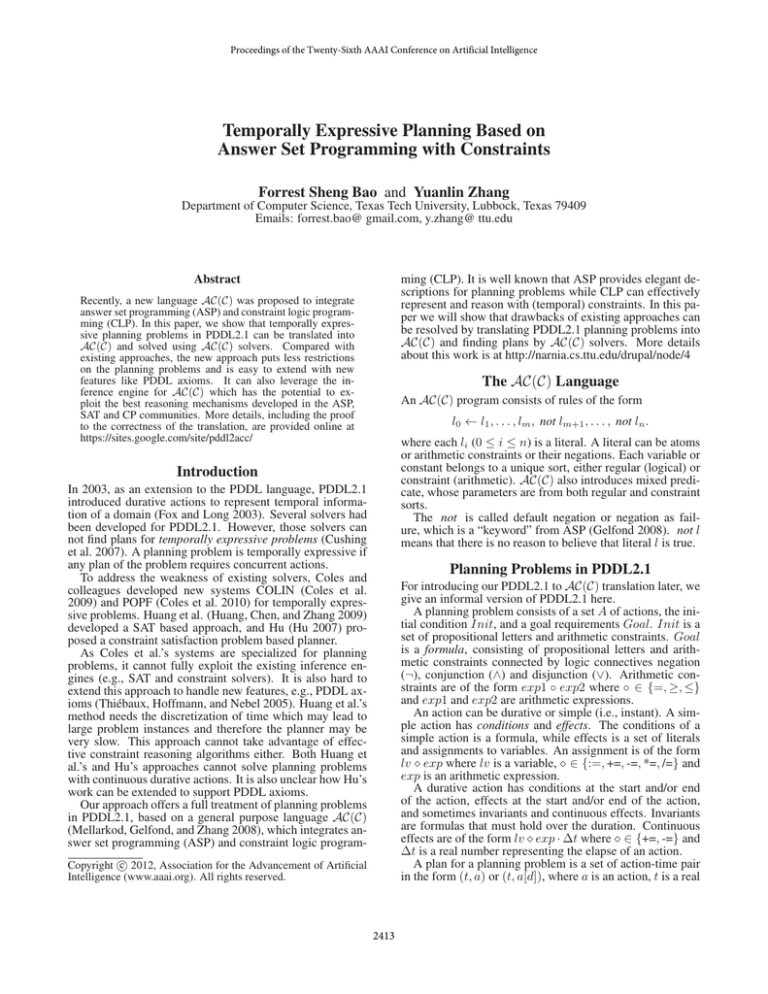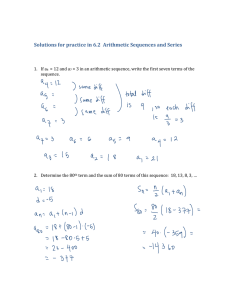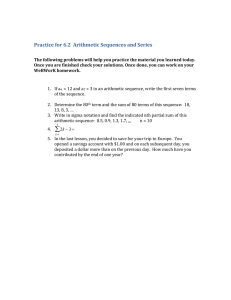
Proceedings of the Twenty-Sixth AAAI Conference on Artificial Intelligence
Temporally Expressive Planning Based on
Answer Set Programming with Constraints
Forrest Sheng Bao and Yuanlin Zhang
Department of Computer Science, Texas Tech University, Lubbock, Texas 79409
Emails: forrest.bao@ gmail.com, y.zhang@ ttu.edu
Abstract
ming (CLP). It is well known that ASP provides elegant descriptions for planning problems while CLP can effectively
represent and reason with (temporal) constraints. In this paper we will show that drawbacks of existing approaches can
be resolved by translating PDDL2.1 planning problems into
AC(C) and finding plans by AC(C) solvers. More details
about this work is at http://narnia.cs.ttu.edu/drupal/node/4
Recently, a new language AC(C) was proposed to integrate
answer set programming (ASP) and constraint logic programming (CLP). In this paper, we show that temporally expressive planning problems in PDDL2.1 can be translated into
AC(C) and solved using AC(C) solvers. Compared with
existing approaches, the new approach puts less restrictions
on the planning problems and is easy to extend with new
features like PDDL axioms. It can also leverage the inference engine for AC(C) which has the potential to exploit the best reasoning mechanisms developed in the ASP,
SAT and CP communities. More details, including the proof
to the correctness of the translation, are provided online at
https://sites.google.com/site/pddl2acc/
The AC(C) Language
An AC(C) program consists of rules of the form
l0 ← l1 , . . . , lm , not lm+1 , . . . , not ln .
where each li (0 ≤ i ≤ n) is a literal. A literal can be atoms
or arithmetic constraints or their negations. Each variable or
constant belongs to a unique sort, either regular (logical) or
constraint (arithmetic). AC(C) also introduces mixed predicate, whose parameters are from both regular and constraint
sorts.
The not is called default negation or negation as failure, which is a “keyword” from ASP (Gelfond 2008). not l
means that there is no reason to believe that literal l is true.
Introduction
In 2003, as an extension to the PDDL language, PDDL2.1
introduced durative actions to represent temporal information of a domain (Fox and Long 2003). Several solvers had
been developed for PDDL2.1. However, those solvers can
not find plans for temporally expressive problems (Cushing
et al. 2007). A planning problem is temporally expressive if
any plan of the problem requires concurrent actions.
To address the weakness of existing solvers, Coles and
colleagues developed new systems COLIN (Coles et al.
2009) and POPF (Coles et al. 2010) for temporally expressive problems. Huang et al. (Huang, Chen, and Zhang 2009)
developed a SAT based approach, and Hu (Hu 2007) proposed a constraint satisfaction problem based planner.
As Coles et al.’s systems are specialized for planning
problems, it cannot fully exploit the existing inference engines (e.g., SAT and constraint solvers). It is also hard to
extend this approach to handle new features, e.g., PDDL axioms (Thiébaux, Hoffmann, and Nebel 2005). Huang et al.’s
method needs the discretization of time which may lead to
large problem instances and therefore the planner may be
very slow. This approach cannot take advantage of effective constraint reasoning algorithms either. Both Huang et
al.’s and Hu’s approaches cannot solve planning problems
with continuous durative actions. It is also unclear how Hu’s
work can be extended to support PDDL axioms.
Our approach offers a full treatment of planning problems
in PDDL2.1, based on a general purpose language AC(C)
(Mellarkod, Gelfond, and Zhang 2008), which integrates answer set programming (ASP) and constraint logic program-
Planning Problems in PDDL2.1
For introducing our PDDL2.1 to AC(C) translation later, we
give an informal version of PDDL2.1 here.
A planning problem consists of a set A of actions, the initial condition Init, and a goal requirements Goal. Init is a
set of propositional letters and arithmetic constraints. Goal
is a formula, consisting of propositional letters and arithmetic constraints connected by logic connectives negation
(¬), conjunction (∧) and disjunction (∨). Arithmetic constraints are of the form exp1 ◦ exp2 where ◦ ∈ {=, ≥, ≤}
and exp1 and exp2 are arithmetic expressions.
An action can be durative or simple (i.e., instant). A simple action has conditions and effects. The conditions of a
simple action is a formula, while effects is a set of literals
and assignments to variables. An assignment is of the form
lv exp where lv is a variable, ∈ {:=, +=, -=, *=, /=} and
exp is an arithmetic expression.
A durative action has conditions at the start and/or end
of the action, effects at the start and/or end of the action,
and sometimes invariants and continuous effects. Invariants
are formulas that must hold over the duration. Continuous
effects are of the form lv exp · ∆t where ∈ {+=, -=} and
∆t is a real number representing the elapse of an action.
A plan for a planning problem is a set of action-time pair
in the form (t, a) or (t, a[d]), where a is an action, t is a real
c 2012, Association for the Advancement of Artificial
Copyright Intelligence (www.aaai.org). All rights reserved.
2413
p(S + 1) ← p(S), not ¬p(S + 1).
¬p(S + 1)← ¬p(S), not p(S + 1).
← m(I, S + 1, Y ), m(I, S, Z), Y 6= Z.
A durative action can be replaced by two simple actions
representing its start and end. These two simple actions can
be translated using methods we just discussed.
For invariants, we require them to hold at all steps over the
duration of an durative action similarly to Eq. 1. If a durative
action has continous effects, we also require the invariants to
hold between all step pairs over its duration.
For continuous effects, we introduce a new predicate and
use the method similiar to how we handle variable assignments for simple actions earlier.
In plan generation, every simple action (including those
induced from durative actions) can occur or not in each
even step. Non-zero-separation for mutex actions is also enforced.
number for time, and d is a rational value specifying the duration if the action is durative. A plan is valid if each action’s
conditions (including invariants) are satisfied, no mutex actions happen simultaneously, and the Goal is satisfied after
the last action.
Translation from PDDL2.1 to AC(C)
In this section, we discuss the key ideas in translating a
PDDL2.1 program into an AC(C) one. A concept step is
used to track the execution of actions in a plan. For every
time instant that an action occurs, there are two consecutive
steps, one even and one add, associated to it. The even step
is for action happening while the odd step is for invariant
checking. Note that though the concept step is used, time
is not discretized. Mixed literal at(S, T ) is true if step S
happens at time T .
For every propositional letter p involved in a planning
problem, we use the literal p(S) to represent its truth value
in step S. We index all variables 1 and denote the i-th variable invovled in a planning problem as xi . Mixed literal
m(i, S, Xi ) is true if the value of xi is Xi ∈ R in step S.
As mentioned earlier, Init is a set of propositional letters
and arithmetic constraints. For every propositional letter p
in Init, we introduce the fact rule p(0). We also have the
closed-world assumption rule ¬p(0) ← not p(0).
For every arithmetic constraint exp1 ◦ exp2 in Init, we
introduce the rule
← ¬exp10 ◦ exp20 , m(c1 , 0, Xc1 ), . . . , m(ck , 0, Xck ).
Conclusion
In this paper, we show key ideas in using AC(C) to solve
temporally expressive planning problems represented in
PDDL2.1. For PDDL extended with axioms, since PDDL
axiom is simply logic programs, our translation has the ability to support PDDL axioms as well.
Acknowledgment
Yuanlin Zhang’s contribution in this work was partially supported by NSF grant IIS-1018031. Forrest S. Bao’s contribution in this work was partially supported by ARMWorks,
Inc. (Seattle, WA) via Texas Tech University.
where exp10 (and similarly exp20 ) is the result of substituing
every variable xci in exp10 by its value Xci .
Goal and conditions of simple actions are formulas. To
translate formulas, for every non-literal subformula, we introduce a new propositional letter, and use a set of rules to
represent the logical connectives. For example, the formula
f = p ∧ (x2 − x1 > 3) is translated into (S is a step):
p0 (S) ← p(S).
p00 (S)← m(1, S, X1 ), m(2, S, X2 ), X2 − X1 > 3.
f (S) ← p0 (S), p00 (S).
At any step S, a simple action a cannot occur if its condition c, a formula, is not satisfied:
← occur(a, S), not c(S).
(1)
where c(S) is a new atom defined by a set of rules for translating c as we just discussed.
For every literal l in the effects of a simple action a, we
have l(S + 1) ← occurs(a, S).
For a variable assignment xi exp in the effects of a simple action a, we consider the case that a is the only action
that changes xi ’s value and is += as an example. A new
mixed literal contribution(i, a, S, Y ) is introduced and it
holds if the contribution from action a to the variabel xi at
step S is Y . The rules below ensure that Y equals to exp at
step S if action a occurs at step S, and Y is 0 otherwise:
← contribution(i, a, S, Y ), occurs(a, S), Y 6= exp0 .
← contribution(i, a, S, Y ), not occurs(a, S), Y 6= 0.
where exp0 is defined as before.
The value of xi is updated by:
← m(i, S + 1, Z), m(i, S, Xi ),
contribution(i, a, S, Y ), Z 6= Xi + Y.
All literals and variable values follow the inertial law.
1
References
Coles, A. J.; Coles, A.; Fox, M.; and Long, D. 2009. Temporal planning in domains with linear processes. In IJCAI,
1671–1676.
Coles, A. J.; Coles, A.; Fox, M.; and Long, D. 2010.
Forward-chaining partial-order planning. In ICAPS, 42–49.
Cushing, W.; Kambhampati, S.; Weld, M.; and Weld, D.
2007. When is temporal planning really temporal? In Proceedings of the 20th international joint conference on Artifical intelligence (IJCAI), 1852–1859.
Fox, M., and Long, D. 2003. PDDL2.1: An extension to
PDDL for expressing temporal planning domains. Journal
of Artificial Intelligence Research (JAIR) 20:61–124.
Gelfond, M. 2008. Answer sets. Handbook of Knowledge
Representation. Elsevier. 285–316.
Hu, Y. 2007. Temporally-expressive planning as constraint satisfaction problems. In Proceedings of 17th International Conference on Automated Planning and Scheduling (ICAPS), 192–199.
Huang, R.; Chen, Y.; and Zhang, W. 2009. An optimal temporally expressive planner: Initial results and application to
P2P network optimization. In Proceedings of the 19th International Conference on Automated Planning and Scheduling (ICAPS), 178–185.
Mellarkod, V. S.; Gelfond, M.; and Zhang, Y. 2008. Integrating answer set programming and constraint logic programming. Annals of Mathematics and Artificial Intelligence 53(1-4):251–287.
Thiébaux, S.; Hoffmann, J.; and Nebel, B. 2005. In defense
of PDDL axioms. Artificial Intelligence 168(1):38–69.
called Primitive Numerical Expression in (Fox and Long 2003)
2414





